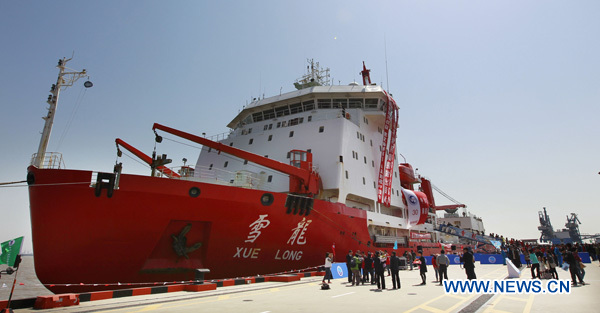Xuelong concludes 30th Antarctic expedition
Xinhua, April 16, 2014 Adjust font size:
|
|
| Chinese research vessel and icebreaker Xuelong (Snow Dragon) is anchored at a dock in Shanghai, east China, April 15, 2014. The icebreaker returned to Shanghai on Tuesday, concluding the country's 160-day scientific expedition to Antarctica. (photo / Xinhua) |
Chinese research vessel and icebreaker Xuelong (Snow Dragon) docked in Shanghai on Tuesday, wrapping up the country's 30th scientific expedition to Antarctica.
The 257 crew members fulfilled 30 scientific assignments and 15 other supply missions during the 160-day voyage, covering 32,000 nautical miles in total, according to Liu Shunlin, chief scientist and leader of the team.
During this expedition, the team set up the Taishan Station as China's fourth such Antarctic supply and research base. At an altitude of 2,600 meters, Taishan is located between China's Zhongshan and Kunlun stations.
The team also chose a site for another new station.
While conducting its scientific investigation, Xuelong reached 75.20 degrees south latitude, the furthest south that a Chinese vessel has ever been.
Scientists on board investigated issues including ice sheet movements, the effects of climate change on geology, and the detection of ice with radar.
They have collected 583 Antarctic meteorites, bringing the country's total number of these objects to 12,035.
While on its way back to China, Xuelong spent 10 days searching for the missing Malaysia Airlines jet MH370 in the southern Indian Ocean.
The Chinese research vessel also escaped through heavy sea ice after evacuating 52 people from trapped Russian ship Akademik Shokalskiy.
China launched its first expedition to the Antarctic in 1984 and has already established the Changcheng Station, Zhongshan Station and Kunlun Station.


